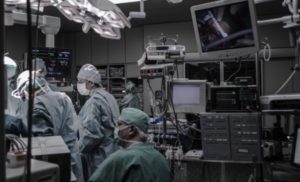
This is a major operation for either primary or secondary liver cancer and undertaken by a few teams only. In order to improve outcomes a standardarised approach is utilised with some variability to account for individual differences and patient preferences. The unique issues associated with this surgery are the bleeding risks, pain issues, preservation of the remaining liver and preventing spread of disease.
Pre operative
You will have been assessed by the surgeon and the oncological team prior to surgery.
The anaesthetic assessment is to assess your suitability for anaesthesia, to confirm the techniques required for safe anaesthesia as well as to gain an understanding of risks involved.
Intraoperative
The anaesthetic normally involves having an intravenous cannula placed, then sitting up for a spinal anaesthetic (for long acting pain relief), followed by the general anaesthetic. This is then followed by placement of extra cannula (large size), as well as central venous access (drip which is placed on the neck), and arterial line (for sampling and monitoring). A catheter for the bladder is also placed whilst you are asleep. See “types of anaesthesia” for more information about these techniques.
The operation is then undertaken, with surgical resection of the lesions. This may take upto 6 hours depending on the complexity of the disease. Afterwards we transfer the patient to the intensive care unit for close monitoring.
Post operative
Once stable, the patient will be sent to the ward with the ward based team and acute pain service helping manage the various issues until the patient is ready to go home. They will also help with the medications for discharge home.